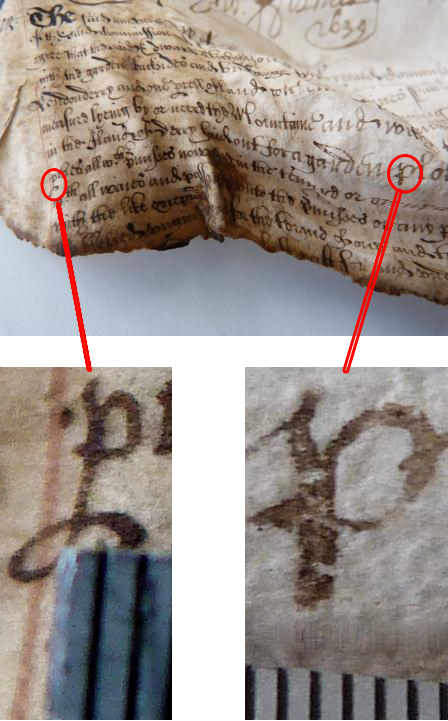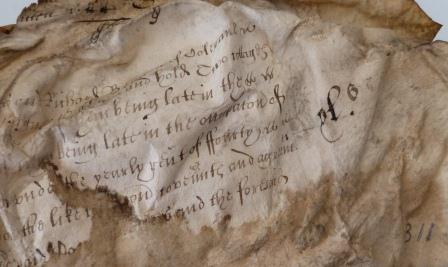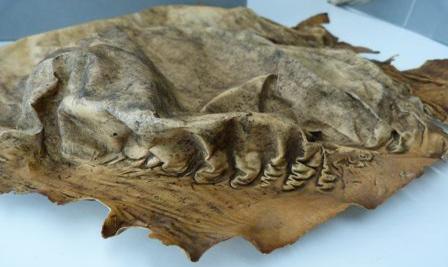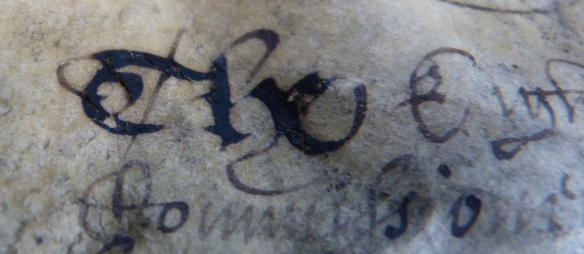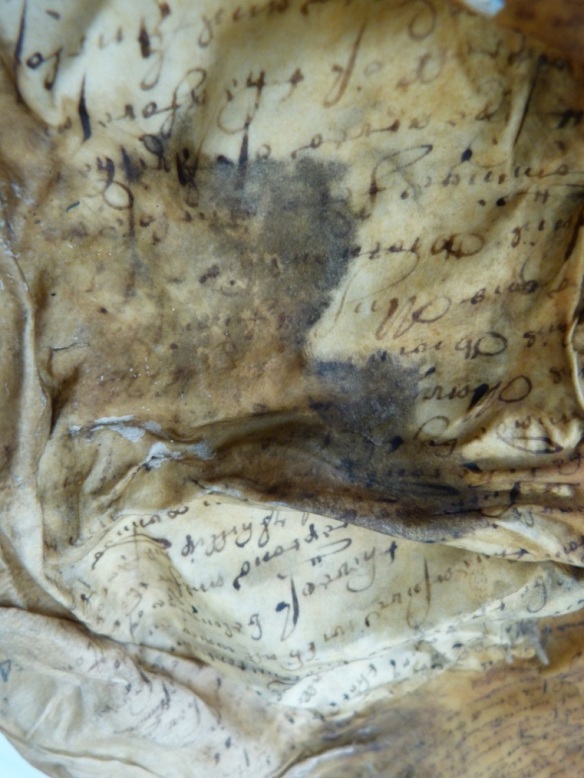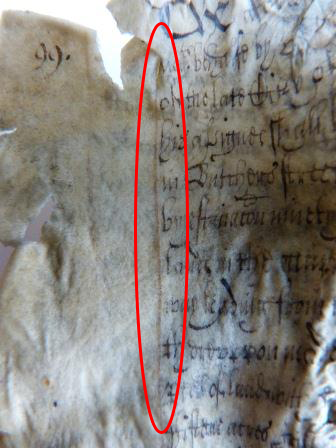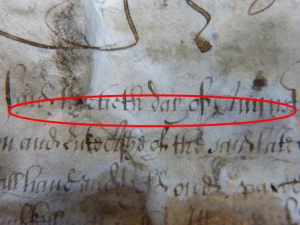The first thing Rachael did was to define the types of damage present in the parchment sheets and to determine the grade of deterioration. The fire and water have almost destroyed the book and the sheets left are badly damaged. The different types of damage and extent of each are recorded.
The most obvious one present in all the sheets is the planar distortion of the surface. Some of the creases are so stiff (due to the heavy gelatinisation) that it will be impossible to flatten them to any better degree.
These distortions are also caused by the heat of the fire which has shrunk the parchment. As a reference, we have taken a picture of a letter P present in the same area as another P. The only difference is that one P on the parchment was affected by the heat at a different grade than the other P, where the parchment has shrunk and is less than half its original size!
Creases and tears are found in various areas, mostly on the edges of the sheet.
Some sheets have calcite on the surface; this is a typical degradation product of parchment that has been subjected to moisture and high temperatures. Calcite is present within the structure of the parchment, but, under these conditions, migrates to the surface.
Another type of damage is severe gelatinisation. Gelatinisation is a degradation process catalysed by high temperature in which the collagen changes its structure irreversibly (denaturation). We have rated the damage in terms of severity at G1, G2 or G3. All of the gelatinisation recorded was rated G2 (full glass layer) or G3 (full penetration of parchment- transparent).
There are some areas where the parchment is so curled that the text is hidden between the folds.
The metallogallic inks, presumably due to the heat, have darkened greatly and from the original brown have become almost black. In some areas the ink is flaking off and in some other parts it has completely flaked off leaving a lighter colour on the parchment.
Last, but not least, you can’t miss out the dirt and stains in this whole collection of different types of damage.
This job is going to be very challenging, let’s see what Rachael will come up with!

